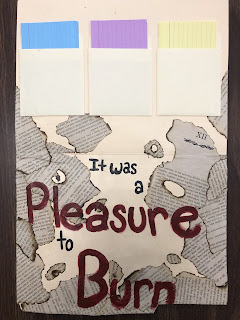Many of us know to use the backwards design (click here for more info.) method when planning which means we start with the standards and objectives in mind, but are we consistently keeping track of the standards we are covering in each unit? A few years ago, I started keeping track of how many times I cover each standard throughout the year, and then I assessed how effective I was at teaching each of the standards through the units I chose. The way I did this was I created a standards checklist sheet (click here) for every unit that I taught. After I taught the unit, I would revisit the standards I hoped to teach throughout the unit, and I would highlight them and provide evidence of what lesson or activity I used that was associated with that standard (see below). I now do this for every single unit I teach; this allows me to see that even though I'm teaching a unit on Othello, I am able to incorporate reading, writing, language, and speaking and listening standards. The sheet allows me to reflect upon what standards I covered, when, and whether or not it was effective. I keep each of these standards checklists in a binder, and at the end of the year, I go through to see if I'm consistently teaching each of the standards. It becomes pretty apparent which standards I tend to focus upon more, and then I think about how I can be better at incorporating the others. For example, I am terrible when it comes to the "Integration of Knowledge and Ideas" strand. Can I get an amen?
Oftentimes we say, I know I'm covering the standards, but are you? When and how? And are you effective? Am I beginning to sound like an administrator? How many rhetorical questions can I ask in one blog? That was another one. Anywho, I'm hoping you can use a checklist like this to become more of a reflective practitioner; it really helped me to realize that I have areas in need of improvement too and still do!
Keep on stressin on,
Oftentimes we say, I know I'm covering the standards, but are you? When and how? And are you effective? Am I beginning to sound like an administrator? How many rhetorical questions can I ask in one blog? That was another one. Anywho, I'm hoping you can use a checklist like this to become more of a reflective practitioner; it really helped me to realize that I have areas in need of improvement too and still do!
Keep on stressin on,




















